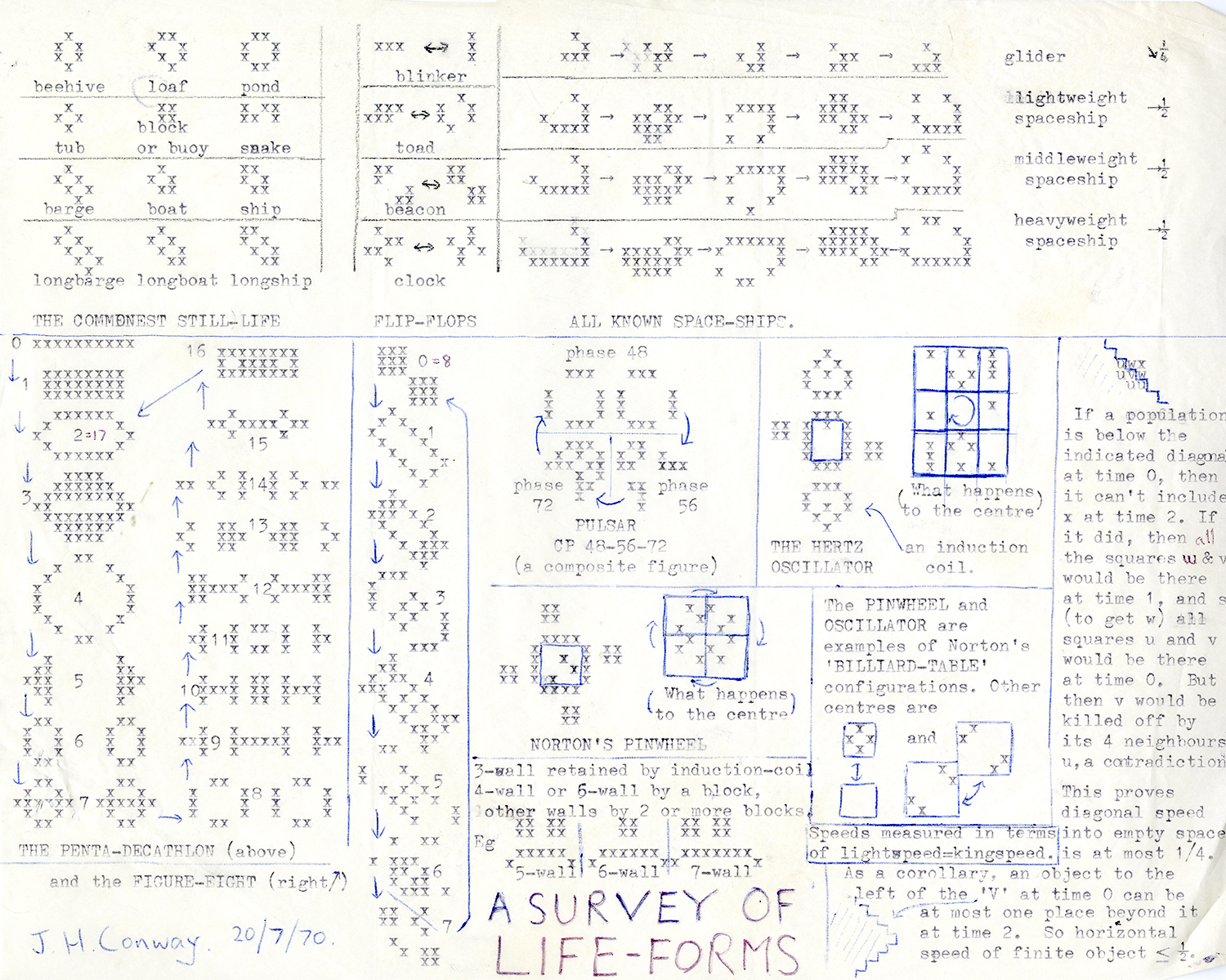

There should be initial patterns that apparently do grow without limit.There should be no initial pattern for which there is a simple proof that the population can grow without limit.The Game of Life rules were carefully chosen by Conway to satisfy three simple criteria (Gardner, 1970): Time steps are sometimes called ‘generations’.

The initial state of the game is the ‘seed’ and all cells are updated simultaneously. Rule 1 represents ‘death by under-population’ rule 2 represents ‘sustainable life’ rule 3 represents ‘death by over-population’, and rule 4 represents ‘birth’. These rules can be thought to represent basic processes of life and death, motivating the name ‘Game of Life’.
And ‘off’ cell (t -1) with exactly three ‘on’ neighbours (t -1) transitions to an ‘on’ state at time t. Any ‘on’ cell (t -1) with more than three ‘on’ neighbours (t -1) transitions to an ‘off’ state at time t. Any ‘on’ cell (t -1) with two or three ‘on’ neighbours (t -1) remains ‘on’ at time t. Any ‘on’ cell (at time t-1) with fewer than two ‘on’ neighbours (at t -1) transitions to an ‘off’ state at time t. The game takes place in discrete time, with the state of each cell at time t determined by its own state and the states of its eight immediate neighbours at t-1 (the Moore neighbourhood of radius 1), according to the following simple rules: In its standard format, the Game of Life unfolds on an infinite two-dimensional grid composed of cells each of which is either ‘on/alive’ or ‘off/dead’. 5 Implications: Emergence, self-organization, autopoeisis, and the physics of information. Even though its (simple) rules are specified at the level of individual cells, one sees entities at coarse-grained ‘higher’ levels of description, whose behaviors are better described by rules at these higher levels. One reason for its appeal is that it is very simple to program, yet at the same time it appears to exemplify emergent and self-organized behaviour. First popularized in 1970 in the Scientific American (Gardner, 1970), the Game of Life has attracted lasting appeal among both scientific and amateur communities. Following specification of an initial configuration, patterns evolve over time across the grid requiring no further user input (thus ‘zero-player’). It takes place on an infinite two-dimensional grid in which cells can be ‘on’ (alive) or ‘off’ (dead), and is defined by a set of rules that jointly determine the state of a cell given the state of its neighbours. The Game of Life (sometimes known simply as Life) is an example of a cellular automaton and a zero-player game. Izhikevich, Editor-in-Chief of Scholarpedia, the peer-reviewed open-access encyclopediaĭr. Use button A for the next stage of life and button B to reset.Eugene M. Here’s a program that simulates cell life in the LED matrix. 
This is reproduction.ĭepending on the pattern of living cells at the start of the game, some population simulations may survive longer than others. A dead cell with three live cells next to it turns into a living cell.This is over overpopulation, scarce resources. A living cell with more than three live cells next to it will die.A living cell with two or three live cells next to it continues to live.This is underpopulation, no social support. A living cell with less than two live cells next to it will die.A simulation is run, and based on some simple rules for life and death, cells continue to live, die off, or reproduce.

The game starts with a population of cells placed in a certain pattern on the grid. The cells in the grid have a state of “alive” or “dead”. The Game of Life simulates life in a grid world (a two-dimensional block of cells).








 0 kommentar(er)
0 kommentar(er)
